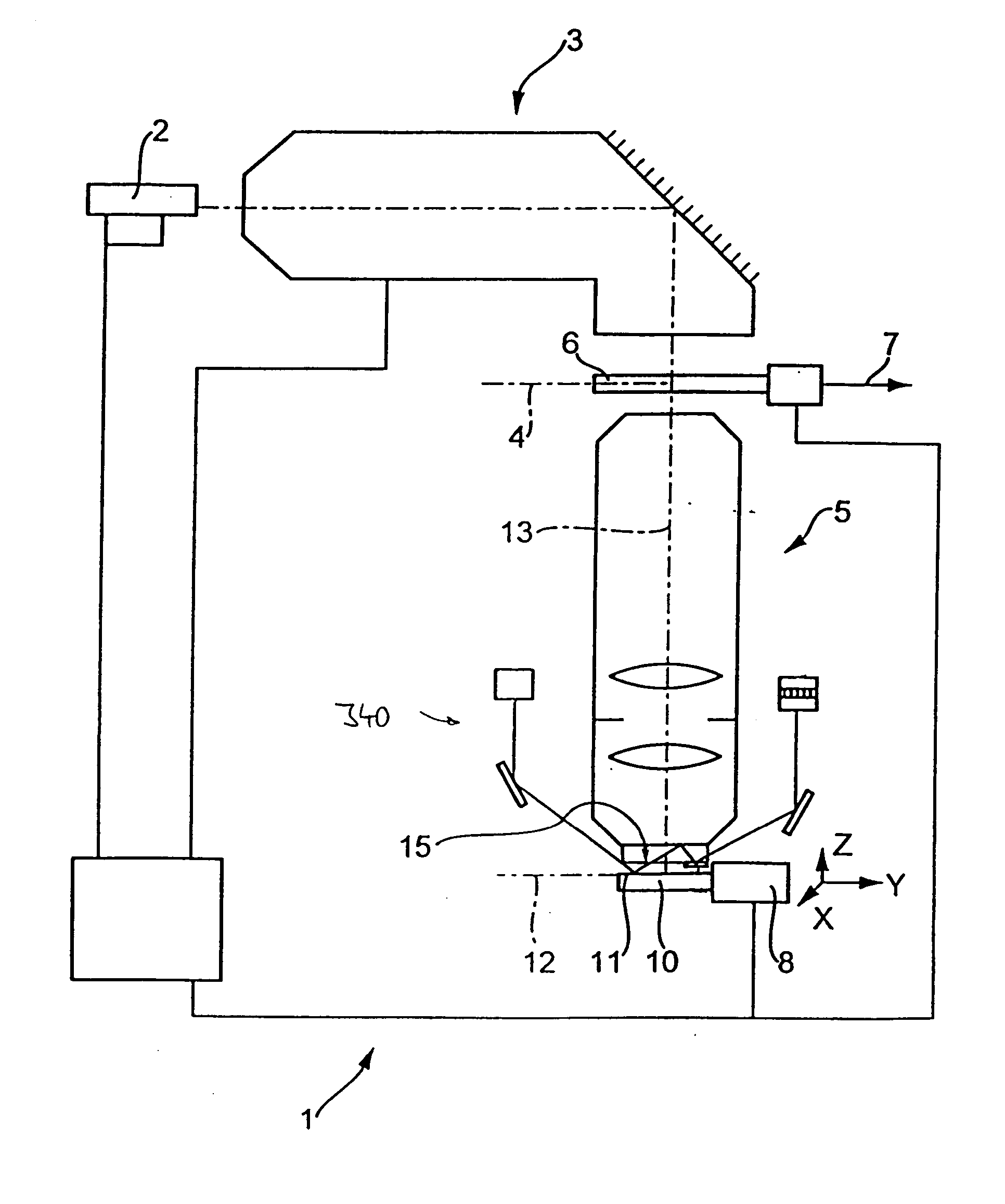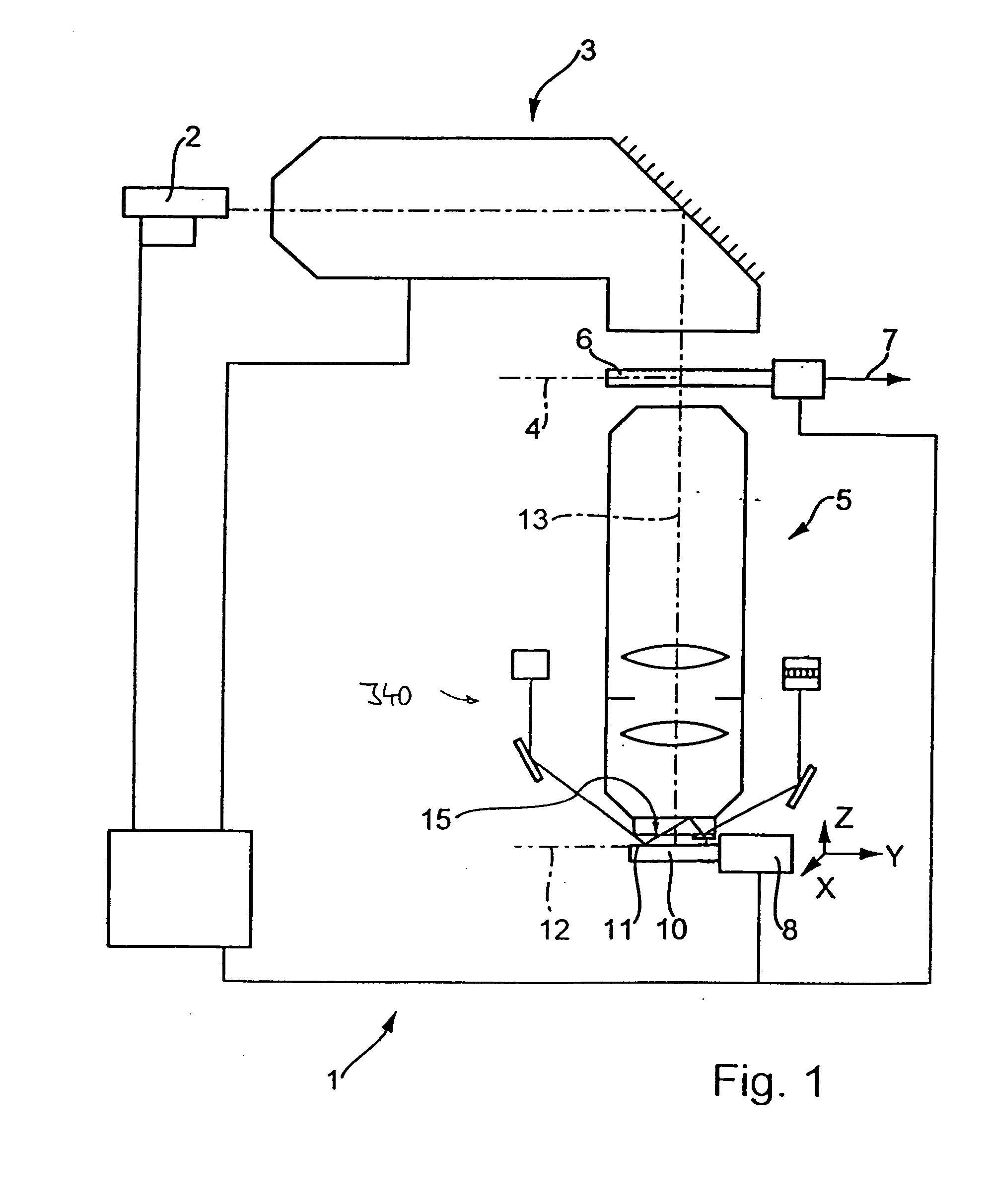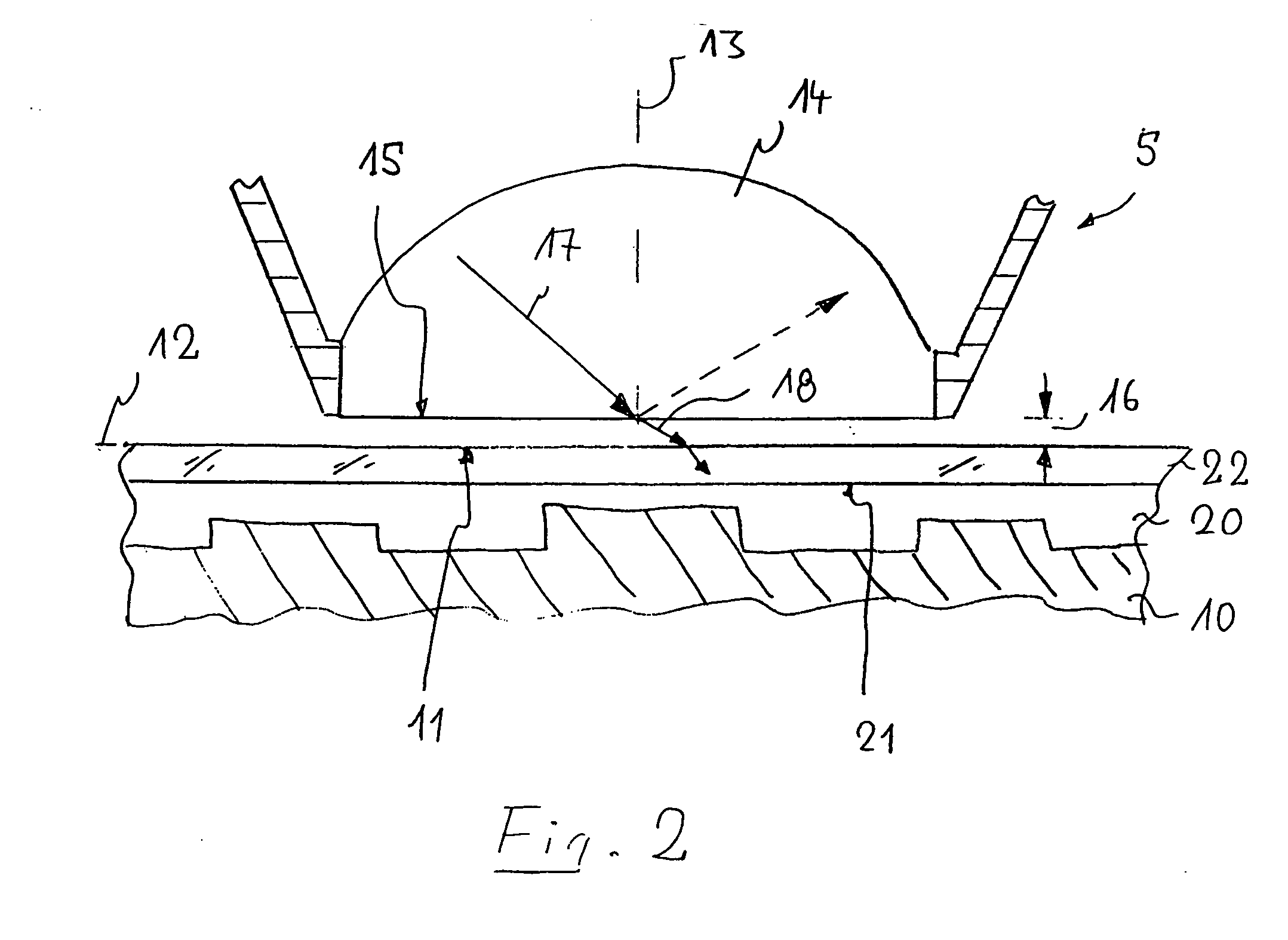Projection exposure method and projection exposure system
- Summary
- Abstract
- Description
- Claims
- Application Information
AI Technical Summary
Benefits of technology
Problems solved by technology
Method used
Image
Examples
Embodiment Construction
[0037]FIG. 1 shows a diagram of a microlithographic projection exposure machine in the form of a wafer stepper 1 which is provided for manufacturing highly integrated semiconductor devices. The projection exposure machine 1 comprises as light source an excimer laser 2 with an operating wavelength of 157 nm, other operating wavelengths, for example 193 nm or 248 nm also being possible. A downstream illuminating system 3 produces in its exit plane 4 a large, sharply delimited, very homogeneously illuminated image field which is adapted to the telecentric requirements of the downstream projection objective 5. The illuminating system 3 has devices for selecting the illuminating mode and in the example can be switched over between conventional illumination with a variable degree of coherence, ring-field illumination and dipole or quadrupole illumination. Arranged downstream of the illuminating system is a device for holding and manipulating a mask 6 such that the latter lies in the objec...
PUM
 Login to View More
Login to View More Abstract
Description
Claims
Application Information
 Login to View More
Login to View More - R&D
- Intellectual Property
- Life Sciences
- Materials
- Tech Scout
- Unparalleled Data Quality
- Higher Quality Content
- 60% Fewer Hallucinations
Browse by: Latest US Patents, China's latest patents, Technical Efficacy Thesaurus, Application Domain, Technology Topic, Popular Technical Reports.
© 2025 PatSnap. All rights reserved.Legal|Privacy policy|Modern Slavery Act Transparency Statement|Sitemap|About US| Contact US: help@patsnap.com



